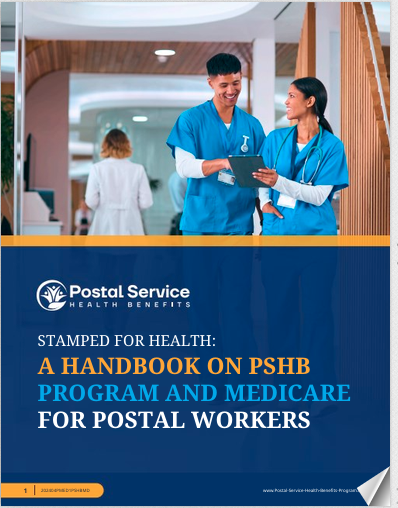Key Takeaways
-
Coinsurance is the percentage of costs you pay for medical services under your Postal Service Health Benefits (PSHB) plan after meeting your deductible.
-
Understanding your coinsurance responsibilities helps you anticipate healthcare expenses and make informed decisions about your coverage.
Breaking Down Coinsurance in Postal Service Health Benefits (PSHB)
If you’re covered under a Postal Service Health Benefits (PSHB) plan, you’ve likely come across the term “coinsurance.” But what does it really mean for you? Simply put, coinsurance is your share of healthcare costs after you’ve met your plan’s deductible. Unlike copayments, which are fixed amounts, coinsurance is a percentage of the total cost of a service. The exact percentage varies depending on your plan and whether you receive care from an in-network or out-of-network provider.
How Coinsurance Works with PSHB Plans
The Role of Deductibles
Before your coinsurance kicks in, you must first meet your plan’s deductible. This is the amount you pay out of pocket for healthcare services before your insurance starts covering a portion of the costs. PSHB plans have different deductible amounts based on whether you choose a high-deductible or standard plan.
Percentage-Based Cost Sharing
Once you reach your deductible, your coinsurance takes effect. This means you’ll share the cost of services with your insurance provider. For example, if your plan has an 80/20 coinsurance structure, your insurance will cover 80% of the allowed cost for a covered service, and you’ll pay the remaining 20%.
In-Network vs. Out-of-Network Costs
Using in-network providers generally results in lower coinsurance rates. If you go out of network, you might pay a higher percentage or even be responsible for the full cost of the service. PSHB plans have provider networks, and staying within those networks can save you a significant amount on medical expenses.
Understanding the Impact of Coinsurance on Your Healthcare Costs
Out-of-Pocket Maximums
There’s a limit to how much you’ll have to pay in coinsurance each year. Once you reach your out-of-pocket maximum, your insurance will cover 100% of covered services for the remainder of the year. This cap includes deductibles, copayments, and coinsurance but does not include monthly premiums.
Comparing Coinsurance with Copayments
Coinsurance and copayments are both forms of cost-sharing, but they work differently. While copayments are fixed amounts for specific services (like $30 for a doctor’s visit), coinsurance is a percentage of the total bill. Depending on your plan and the service received, coinsurance costs can add up quickly.
Key Factors That Influence Your Coinsurance Costs
Type of Medical Service
Different types of care may have different coinsurance rates. For example, hospitalization might have a different rate than outpatient care or specialty visits. Reviewing your PSHB plan’s summary of benefits will give you an idea of what to expect.
Prescription Drug Coverage
Coinsurance also applies to prescription drugs in some PSHB plans. If your plan uses a tiered formulary, your cost may vary depending on whether the medication is a generic, preferred brand-name, or specialty drug.
Specialist vs. Primary Care Visits
Seeing a specialist often comes with a higher coinsurance rate than visiting your primary care provider. It’s a good idea to check your plan’s cost-sharing details before making an appointment.
Ways to Manage Coinsurance Expenses
Using a Health Savings Account (HSA) or Flexible Spending Account (FSA)
If you’re enrolled in a high-deductible PSHB plan, you may have access to a Health Savings Account (HSA), which allows you to set aside pre-tax dollars to cover coinsurance and other medical expenses. Alternatively, a Flexible Spending Account (FSA) can help cover these costs if your plan qualifies.
Choosing Cost-Effective Healthcare Providers
Sticking with in-network providers can significantly lower your coinsurance expenses. Many PSHB plans offer online tools to help you find in-network doctors, hospitals, and pharmacies.
Understanding Your Plan’s Benefits
Each PSHB plan has different cost-sharing structures. Reviewing your plan’s summary of benefits annually can help you anticipate expenses and choose the most cost-effective coverage for your needs.
Making Smart Healthcare Decisions to Minimize Coinsurance Costs
Preventive Care Services
Many PSHB plans fully cover preventive services, such as routine checkups and screenings, with no coinsurance required. Taking advantage of these services can help you avoid costly medical treatments down the line.
Generic vs. Brand-Name Medications
Opting for generic drugs instead of brand-name medications can reduce your out-of-pocket costs, as they often have lower coinsurance rates.
Urgent Care vs. Emergency Room Visits
For non-life-threatening conditions, visiting an urgent care center instead of the emergency room can save you money on coinsurance. Emergency room visits typically have higher out-of-pocket costs.
Know Your Coinsurance Before Seeking Care
Before scheduling a procedure or appointment, it’s important to check with your PSHB plan provider about how much coinsurance you’ll be responsible for. Understanding your financial responsibility in advance can prevent unexpected medical bills.
When Coinsurance Becomes a Financial Burden
Assistance Programs
If your coinsurance costs become overwhelming, you may qualify for assistance programs that help reduce medical expenses. Some providers offer payment plans, and in certain cases, financial aid may be available.
Reviewing Your Plan Annually
Healthcare costs change, and so do insurance plans. Reviewing your PSHB options during Open Season allows you to select a plan with a more favorable coinsurance structure based on your healthcare needs.
Stay Informed About Your Coinsurance Responsibilities
Understanding coinsurance is a key part of managing your healthcare costs under a PSHB plan. By staying informed about your coverage, using in-network providers, and taking advantage of cost-saving strategies, you can make the most of your benefits while minimizing out-of-pocket expenses.
For personalized guidance on your PSHB options, consider getting in touch with a licensed agent listed on this website. An agent can help you navigate your plan choices and ensure you’re making the best decisions for your healthcare needs.






